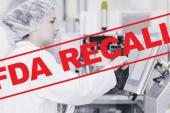Little Pre- and Postmarket Testing for Most Recalled CV Devices
The majority of FDA-recalled devices made it to market via the 510(k) pathway, which doesn’t require new clinical or safety data.

The majority of cardiovascular devices with Class I recalls from the US Food and Drug Administration made it to market without appropriately rigorous premarket clinical testing, a new analysis has shown.
Even when clinical testing was done prior to approval, it was mainly lower quality, with most studies being nonrandomized, unblinded clinical trials that used surrogate endpoints with no active control groups, reported investigators in a study published September 16, 2024, in Annals of Internal Medicine. Postmarket surveillance was generally quite poor, too.
“Medical devices, in general, have very variable testing requirements, but what we have shown is that for cardiology devices, which generally are well tested, the ones that underwent safety issues pretty shortly after authorization tend to not have very good premarket evidence or have any requirements for postmarket evidence,” senior investigator Kushal T. Kadakia, MSc (Harvard Medical School, Boston, MA), told TCTMD.
Over a 10-year period, there were 137 Class I recalls—the most serious type, with the potential for injury or death—affecting 157 unique cardiovascular devices, with automated external defibrillators, intra-aortic balloon pumps and the control systems, and implantable cardioverter defibrillators (ICDs) the most frequently recalled. In total, 71.3% of the recalled cardiovascular devices came to market via the FDA’s 510(k) pathway. The remaining recalled devices (28.7%) were approved under the Premarket Approval (PMA) and PMA supplement process.
Steven Nissen, MD (Cleveland Clinic, OH), who also studied medical device recalls and the FDA’s approval process, said the 510(k) pathway has long been problematic.
“Regulation of medical devices is not rigorous,” he told TCTMD. “Many devices get approved with the 510(k) provision, which says a device can get approved if it's similar to a previously approved device. Many of these devices are approved that way, and that means they don't undergo rigorous testing. When that happens, mistakes get made and ultimately patients get hurt.”
Serious Recalls With Moderate-Risk Devices
The 510(k), which is typically a swifter process than the stricter PMA, is intended to foster iterative innovation, with new premarket clinical testing not required if the product has an indication and technology similar to an already approved “predicate” device—moderate-risk class II devices such as diagnostic catheters or intra-aortic balloon pumps.
This pathway, however, has been criticized in the past. The Institutes of Medicine once recommended scrapping it in favor of developing a new clearance process for class II devices.
Higher-risk class III devices, such as pacemakers, ICDs, stents, and bioprosthetic valves, are approved under the PMA pathway and require clinical evidence demonstrating safety and effectiveness. However, a new indication for use or labeling change for the device can be approved via the supplement pathway, a process that doesn’t require supporting clinical evidence.
Devices will continue to be a part of cardiology care, because they're very important and offer tremendous benefit to patients. Kushal T. Kadakia
Between 2013 and 2022, the 137 recalls involved a median of 7,649 devices available for clinical use. The most common reason cited for the recall was device design, process control, and component design or selection. Of the 83 recalls that included safety information, the median number of incidents per recall was 13.5 complaints. There were four recalls that reported between 12 and 26 deaths.
All of the recalled products were categorized as moderate-risk class II devices (61.8%) or high-risk class III devices (38.2%). There was a median of 1.4 months between the manufacturer starting the recall and public notification from the FDA. The recommended action in 57.7% of cases was to stop further use.
“As our study focuses on Class I recalls, you'd expect these serious recalls to affect devices that are the highest risk,” said Kadakia. “The 510(k) pathway is meant for low-to-moderate-risk devices. The fact that 70% of our sample, the majority, are devices authorized with 510(k) and not the PMA pathway suggests that maybe some of that risk stratification is inappropriate. The devices that we're calling moderate risk or low risk and allowing to go through 510K: perhaps that's not the right level of risk designation.”
For the 30 devices with premarket clinical testing, seven were approved via the 510(k) pathway, 17 as PMAs, and six as PMA supplements. In all, 35 studies backed up these 30 devices, and while nearly all (94.3%) were prospective, the majority used a nonrandomized design and did not involve blinding. Twelve studies used active controls as the comparator, while four used objective criteria or performance goals. Additionally, surrogate markers were used as the endpoint in most studies (79.4%). The median follow-up in these premarket approval studies was 6 months.
“When we have evidence requirements, we should make sure those evidence requirements are robust and are relying on good quality evidence,” said Kadakia. “In our study, when studies are performed with these devices in the premarket setting, they're often not the best studies. Not only are they not randomized, sometimes they lack control groups entirely. Many have really short follow-up periods, which is a concern, especially if the device is something that's for lifelong use.”
Without extensive premarket data demonstrating safety and efficacy, “there will be recalls and they can be serious,” said Nissen. “My view is that we need a revision in legislation.”
Nissen said that proponents of the status quo argue that tightening up the 510(k) pathway will stifle innovation, but he’s not buying it. As an example, he cited the FDA’s 2008 decision to mandate cardiovascular outcomes’ trials for any new diabetes drug based on research he led showing a heightened risk of MI with rosiglitazone. Critics of that “extremely controversial” requirement said it would stifle drug development in diabetes, but the opposite occurred.
“GLP-1 agonists, SGLT2 inhibitors—we’ve since had the most incredible, effective trials that have changed the practice of medicine,” said Nissen.
Postmarket Setting
Regarding postmarket surveillance, only 22 recalled devices were required to complete postmarket approval studies. Just under half (48.9%) of devices approved as a PMA had postapproval study requirements. For the 28 postapproval studies with available information, 20 were complete by September 2023. Importantly, 20 devices with mandates for the completion of a postapproval study had a Class I recall before that study was completed.
Kadakia said that if the 510(k) pathway’s purpose is to allow for iterative innovation, it’s necessary to understand what’s happening with the devices in the real world once approved. If regulators are giving manufacturers flexibility in premarket evidence requirements, there need to be robust requirements in the postmarket setting.
Mistakes get made and ultimately patients get hurt. Steven Nissen
The FDA has proposed changes to the 510(k) pathway, issuing new draft guidance on the type of evidence expected for devices, recommendations for the use of clinical data as part of the submission, and best practices for choosing an appropriate predicate device. Right now, the draft guidance is open for public comment, but if adopted, it would be expected to tighten evidence requirements part of a 510(k) submission.
“Devices will continue to be a part of cardiology care, because they're very important and offer tremendous benefit to patients,” said Kadakia. “But we need to really strengthen the evidence-generation apparatus for these devices to make sure that we have sufficient evidence across the device life cycle about both the benefits of the devices as well as their potential risks, which sometimes only become apparent as we learn more about devices in use and in clinical practice.”
Nissen said an approval pathway that falls somewhere in between the 510(k) and PMA would be a good idea. “Something that says, it’s similar to a previous device, but it needs at least some safety and efficacy data to be approved,” he suggested.
Michael O’Riordan is the Managing Editor for TCTMD. He completed his undergraduate degrees at Queen’s University in Kingston, ON, and…
Read Full BioSources
See C, Mooghali M, Dhruva SS, et al. Class I recalls of cardiovascular devices between 2013 and 2022: a cross-sectional analysis. Ann Intern Med. 2024;Epub ahead of print.
Disclosures
- Kadakia and Nissen report no conflicts of interest.





Comments